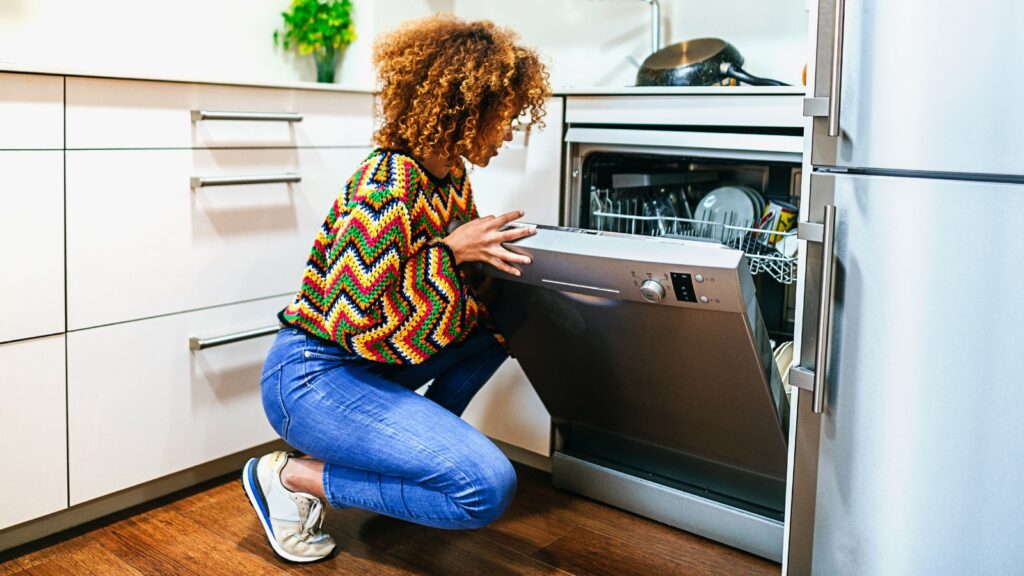Do you still have to hand-dry every item that comes out of the dishwasher? If so, you may be wondering, “Why is my Bosch dishwasher not drying dishes?” Before you spend another minute with your dish towel, this question usually has some straightforward answers. From overcrowding to improper loading, we’ll discuss why your dishwasher leaves dishes wet.
Common Causes for a Dishwasher Not Drying Dishes
A dishwasher not drying dishes doesn’t always require a professional repair. Fixing these common dishwasher mistakes can usually result in dryer, and even cleaner, dishes.
1. Dishes Are Overcrowded
Overcrowding is one of the most common reasons your dishwasher leaves dishes wet. When cups and plates are placed too close together there is little room for hot air to flow and sufficiently dry each item. We suggest you ensure your vents are not blocked and allowing for better airflow and dryer dishes
- Top Rack: Reserve for small plates and bowls, cups, and glasses. Place items upside down and at an angle to allow for optimum draining and airflow.
- Bottom Rack: Ideal for dinnerware and larger bowls and serving plates. Position dishes facing inward and larger bowls upside down for better access to air and water.
- Silverware basket: Place one item in each compartment of the basket, alternating between forks, spoons, and knives to avoid the nesting that blocks airflow.
2. Unloading in the Wrong Order
Just as overloading can leave dishes wet, improper unloading can also be responsible for why your Bosch dishwasher doesn’t dry like it should. Unloading the top rack first permits any trapped water to fall on the dishes below. Make sure you unload the bottom rack before the top so your dishes stay dry.
3. Use More Powerful Drying Options
Some dishwashers use a condensation drying process that doesn’t involve a heating element. Rather, they use a final hot rinse that works with the cool stainless steel interior to promote condensation. Water then drips off dishes faster and more efficiently. A dishwasher not drying dishes sufficiently on the standard drying cycle may require stronger drying options.
We recommend starting out with the Auto Cycle setting, as it’s ideal for mixed loads with different cleaning needs. If your model dishwasher offers additional drying options, the Extra Dry function uses hotter water during the final rinse. This results in faster and more complete drying. The Sanitize function increases the time as well as the temperature of the final rinse for more complete drying that also kills bacteria.
4. Add Rinse Aid for Better Drying
Though rinse aid is often touted for making dishes sparkle, it can be a vital dishwasher drying agent. Rinse aid alters the surface tension of water droplets so they fall off dishes and glassware faster and more easily. This results in drier dishes at the end of each drying cycle.
most manufactures recommends using rinse aid every time you run the dishwasher. Refer to your user manual for the correct methods to add rinse aid to your model dishwasher.

5. Plastic Items Are Still Wet
Do you wonder “Why does my dishwasher not dry my dishes as well if they’re made of plastic?” Plastic doesn’t retain heat as well as other dishware materials, making it more difficult to dry completely during an average drying cycle.
The Extra Dry function can promote better drying of plastic items. Since not all dishwashers have a heating element, it’s safe to place plastic items on the bottom rack in those dishwashers without risking damage.
A dishwasher not drying sufficiently even after these interventions may require a repair. High’N Appliance Repair Services is here to offer a professional and reliable dishwasher service for any repair need.

